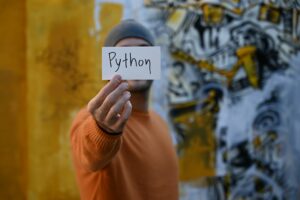Introducing Google’s Secure AI Framework: Enhancing AI Security and Collaboration

Learn how Google’s Secure AI Framework is setting new standards in AI security, fostering collaboration, and ensuring the protection of AI technologies.
Introduction
Artificial Intelligence (AI) has rapidly transformed various industries, driving innovation and efficiency across the globe. However, as AI technologies become more integral to business operations and daily life, ensuring their security has never been more critical. Recognizing this imperative, Google has introduced the Secure AI Framework (SAIF), a comprehensive approach designed to safeguard AI systems against evolving threats. This blog explores how SAIF enhances AI security and promotes collaboration, setting a new benchmark for secure AI technology.
The Importance of Secure AI Technology
As AI systems become more sophisticated, they also become prime targets for cyber threats. Secure AI technology is essential to protect sensitive data, maintain system integrity, and ensure privacy. Without robust security measures, AI models can be vulnerable to various attacks such as data poisoning, model theft, and malicious input injections. These vulnerabilities not only compromise the effectiveness of AI applications but also erode trust among users and stakeholders.
Overview of Google’s Secure AI Framework (SAIF)
Google’s Secure AI Framework (SAIF) is a strategic initiative aimed at creating secure-by-default AI systems. Inspired by established security best practices in software development, SAIF integrates specific measures tailored to address the unique risks associated with AI technologies. The framework emphasizes collaboration across public and private sectors, ensuring that AI advancements are protected through standardized security protocols.
Six Core Elements of SAIF
SAIF is built upon six fundamental elements, each addressing critical aspects of AI security:
1. Expand Strong Security Foundations to the AI Ecosystem
SAIF leverages two decades of secure infrastructure expertise to protect AI systems. This involves adapting traditional security measures, such as input sanitization and supply chain controls, to the AI context. By doing so, organizations can defend against AI-specific threats like prompt injection attacks, ensuring a robust security foundation.
2. Extend Detection and Response to Bring AI into an Organization’s Threat Universe
Timely detection and response are paramount in mitigating AI-related cyber incidents. SAIF encourages organizations to integrate AI into their existing threat intelligence frameworks. Monitoring AI system inputs and outputs for anomalies, coupled with proactive threat intelligence, enhances an organization’s ability to anticipate and counteract potential attacks.
3. Automate Defenses to Keep Pace with Existing and New Threats
The dynamic nature of AI threats necessitates automated defense mechanisms. SAIF advocates for the use of AI to scale and accelerate response efforts, ensuring that security measures evolve in tandem with emerging threats. This automation not only enhances efficiency but also maintains cost-effectiveness in safeguarding AI technologies.
4. Harmonize Platform-Level Controls to Ensure Consistent Security Across the Organization
Consistency in security controls is crucial for effective AI risk mitigation. SAIF promotes the standardization of security measures across various platforms and tools, ensuring that all AI applications benefit from state-of-the-art protections. This harmonization facilitates scalable and cost-efficient security implementations organization-wide.
5. Adapt Controls to Adjust Mitigations and Create Faster Feedback Loops for AI Deployment
Continuous learning and adaptation are central to SAIF’s approach. By implementing reinforcement learning and regular red team exercises, organizations can refine their security controls based on real-time feedback and evolving threat landscapes. This adaptability ensures that AI deployments remain resilient against new and sophisticated attacks.
6. Contextualize AI System Risks in Surrounding Business Processes
SAIF emphasizes the importance of end-to-end risk assessments in AI deployments. By evaluating data lineage, validation processes, and operational behaviors, organizations can make informed decisions that align AI security with broader business objectives. Automated checks and performance validations further reinforce the secure integration of AI systems.
The Role of Collaboration in AI Security
SAIF underscores the necessity of a collaborative approach to AI security. By fostering partnerships between governments, industry leaders, and academic institutions, SAIF aims to build a unified front against AI threats. This collective effort not only enhances security measures but also promotes the sharing of best practices and threat intelligence, driving the overall advancement of secure AI technology.
How CAMEL-AI is Contributing to Secure AI Technology
Building on the foundations of SAIF, CAMEL-AI is developing a comprehensive multi-agent platform that enhances AI security and collaboration. By enabling real-time interactions and learning among AI agents, CAMEL-AI addresses critical challenges such as high-quality synthetic data generation and task automation. This platform not only boosts productivity but also supports secure AI deployments through innovative solutions like integrated chatbot systems and responsive digital assistants, aligning with the principles of SAIF.
The Future of AI Security
As AI continues to evolve, so too will the strategies to secure it. SAIF represents a significant step forward in establishing standardized security protocols that adapt to the dynamic nature of AI threats. With ongoing advancements in frameworks like SAIF and contributions from platforms like CAMEL-AI, the future of AI security looks promising, ensuring that AI technologies remain safe, reliable, and beneficial for all.
Conclusion
Google’s Secure AI Framework is a pivotal development in the realm of AI security, setting new standards for protecting and collaborating on AI technologies. By addressing specific AI-related threats and promoting a collaborative approach, SAIF ensures that AI advancements are both innovative and secure. As organizations continue to integrate AI into their operations, frameworks like SAIF will be essential in safeguarding these powerful technologies.
Ready to enhance your AI security and collaboration? Visit Camel AI to learn more about our innovative solutions and join a community dedicated to advancing secure AI technology.




